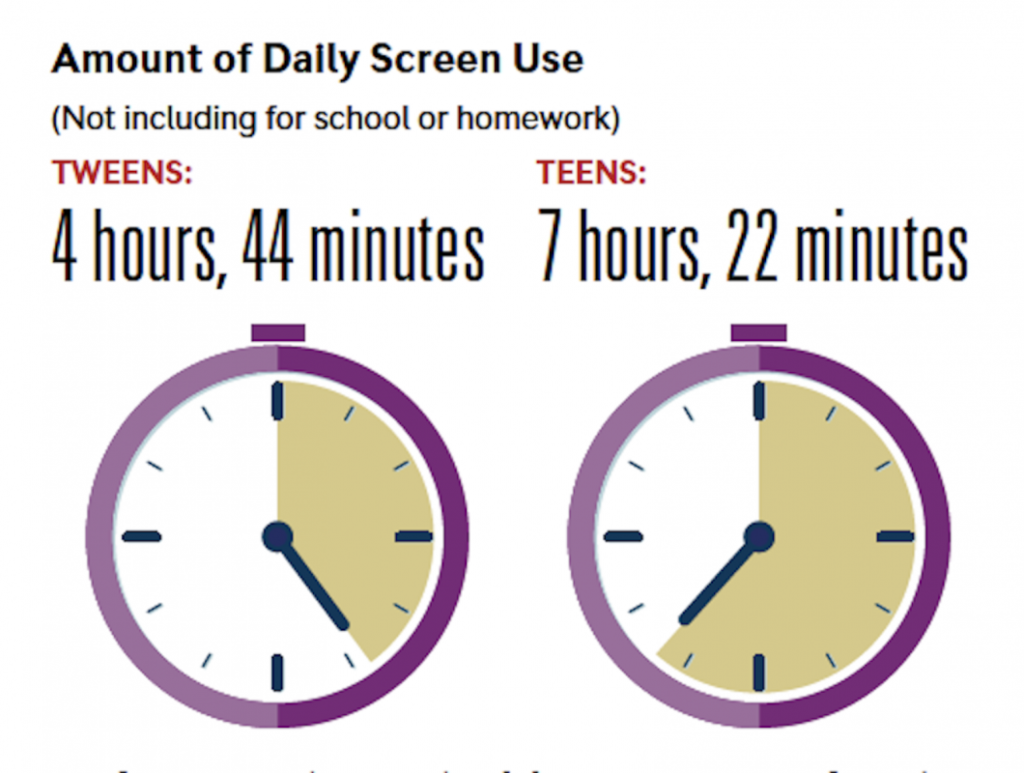Stats to Know About Screen Time and Learning

We all know that screen time has become a part of childhood, but do you know the actual screen time stats about how much and how often children use screens?
The pandemic brought about a major shift; since schools closed, students relied on screens as their primary tool for learning as well as their entertainment outlet, bumping up overall online time significantly.
But now that students are back in class, has screen time gone down? Let’s look at some stats:
Screen Time Stats
According to Common Sense Media. . .
- HALF of all children under eight own a tablet device and spend an average of about 2.25 hours a day on digital screens
- 8- to 12-year-olds spend an average of almost five hours a day looking at screens on smartphones, tablets, gaming consoles, and TVs
- Teens aged 3 to 17 spend about 7 hours and 22 minutes per day on screen time.
- And according to NPR, 53 % of students own a smartphone by the age of 11.
Why Do Screen Time Stats Matter?
The amount of time students spend on screens has been correlated with a number of negative effects in a variety of areas, such as social/emotional issues, mental and physical health issues, and even academic issues.
Social-emotional Issues: Social media can be a magnet for social pressure, anxiety, and bullying. Screen time can also reduce motivation both at home and in school.
Mental & Physical Issues: Screen time can lead to a an increase in a sedentary lifestyle, contributing to the obesity epidemic. Screen time can also affect student mental health.
Academic issues: Nearly 6 in 10 teens do homework on a computer every day (source), which can lead to multitasking, reduced concentration abilities and a decline in productivity.
Monitoring Online Time?
According to the Tiktok page MediaSmarts, parents and kids should have a conversation about online time usage and safety.
Focus less on how much time they spend online and more on the content children consume. MediaSmarts recommends parents follow the 4M Guide to Monitoring Screen Time:
- Minimize screen time, especially for very young children
- Mitigate the negative screen time effects with educational or uplifting content
- Be Mindful of when screens are being used. Create household guidelines, such as no screens during the morning rush or while completing chores.
- Model Positive Habits. Put phones away during conversations or during dinner.
For online safety issues, MediaSmarts recommends that parents keep track of online accounts and write passwords down. Parents can monitor (with their children’s knowledge) as needed if an issue arises. This creates a sense of safety for children to feel open to discussing online content with parents.





